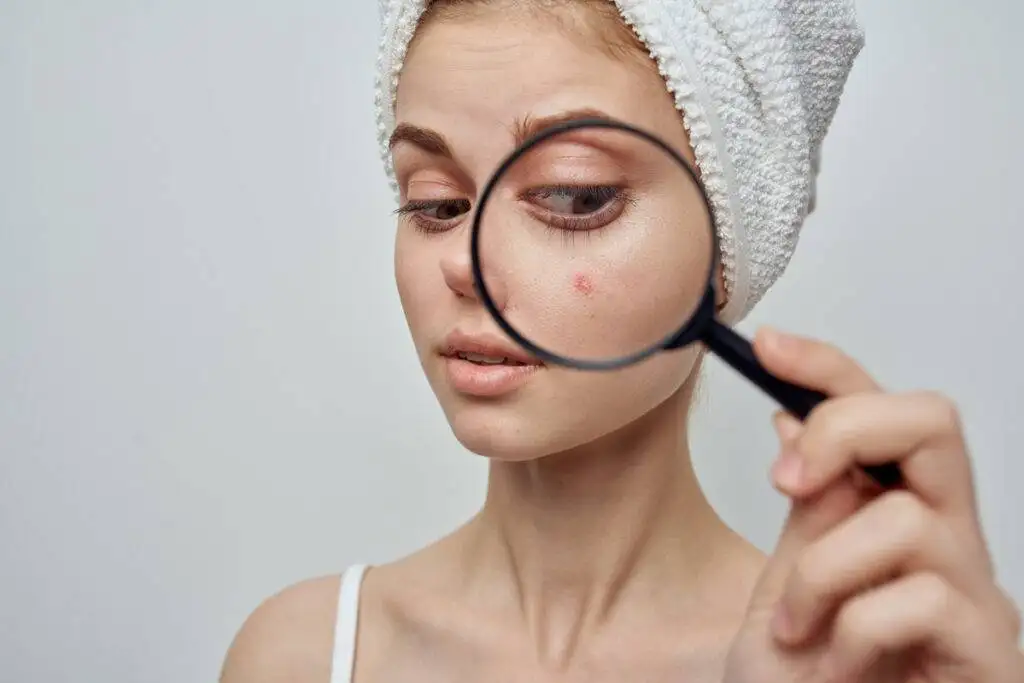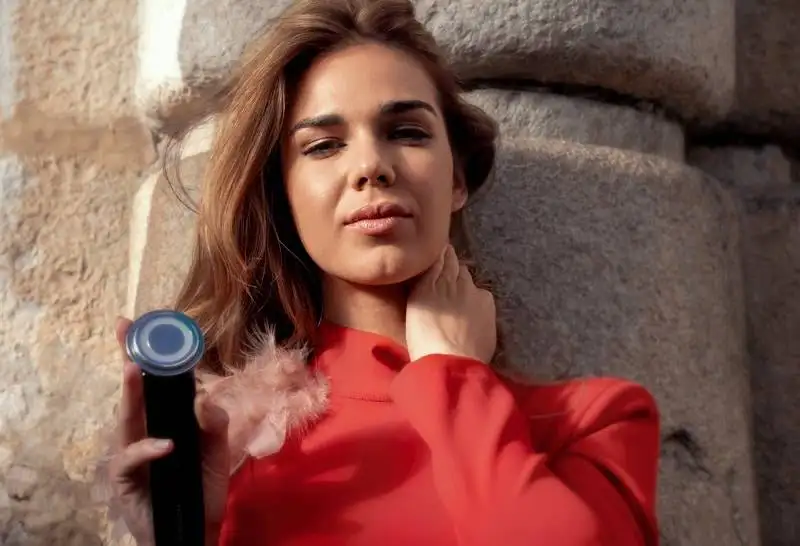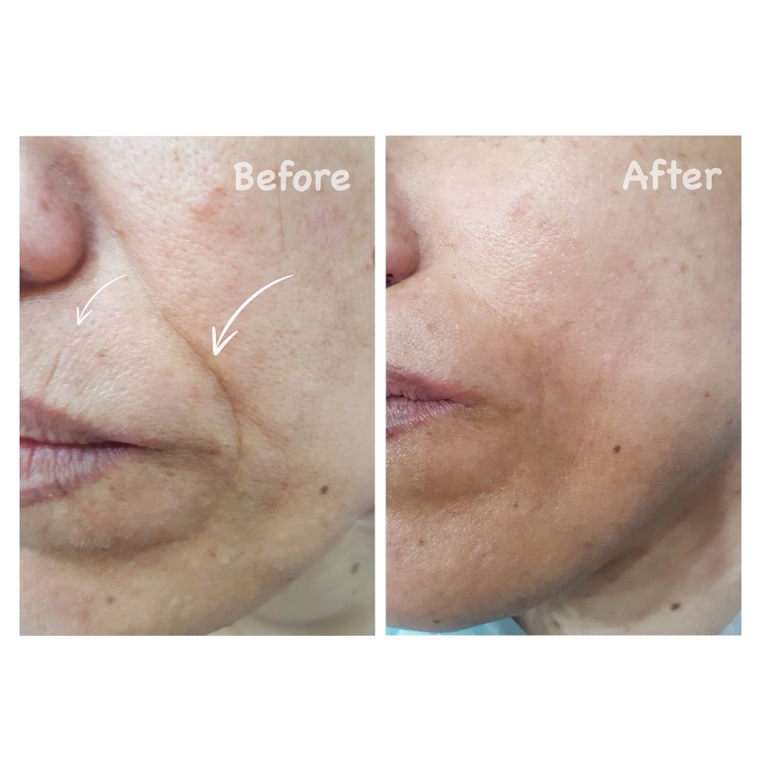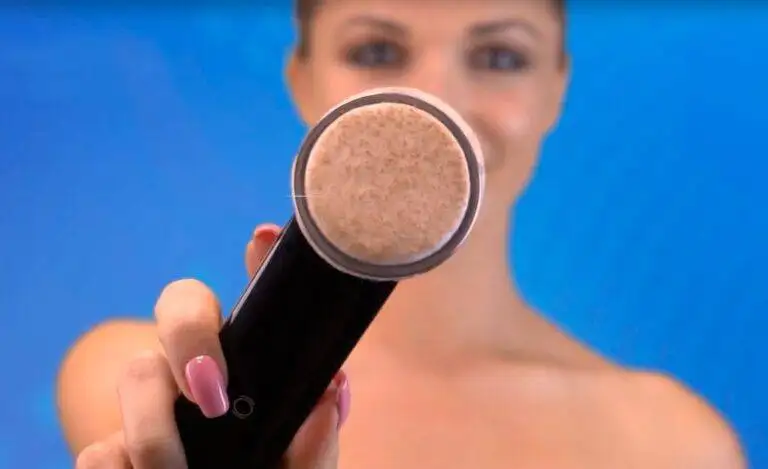Acne is most commonly linked to the early stages of our lives, but the fact is that it can hit us at any point in our lives. And acne can be a constant battle for some of us.
Some of us have genetics and hormones that make us more prone to inflammation than others. However, a significant role in the development of acne is the hormonal changes we go through during our lifetime. Hormonal changes is why many women get acne around the time of their periods, during pregnancy and menopause.
Let us look at what acne is, what is causing it, and what we can do to avoid it, improve it and have balanced, relaxed skin this fall!
Acne or Acne Vulgaris
Acne, also known as acne vulgaris, is a long-term skin condition when dead skin cells and oil from the skin clog hair follicles. It causes whiteheads, blackheads or pimples. Acne is most common among teenagers, though it affects people of all ages.
Acne Vulgaris is the most common skin disease in industrialised nations. Between 70% – 95% of adolescents are affected to some degree by blemished skin. There are also increasing numbers of adults, particularly women, experiencing acne later in life. Acne usually begins during puberty, when the hormone changes start, but acne can be part of their life until adulthood.
The term “acne” applies to everything from whiteheads and blackheads to deeper papules and painful cysts.
Acne signs vary depending on the severity of the skin condition, and acne usually appears on the face, forehead, chest, upper back and shoulders. Typical symptoms of acne are:
- Whiteheads are closed clogged pores.
- Blackheads which are open clogged pores
- Papules or tiny red and tender bumps on the skin
- Pustules or pimples which are papules with pus in them
- Nodules or big and solid, sometimes painful lumps under the skin
- Cystic lesions are lumps under the skin. They can be painful since they are filled with pus. Source: Wikipedia
As we call it, acne can appear in different forms and in various degrees of severity that differs from person to person. But, of course, we all have that one friend, don’t we, that never had a pimple in our whole life. So what is it that makes some of us more prone to acne than others?

Why are some of us more prone to acne than others?
As we know, our genetics and hormones make some of us more prone to inflammation than others. Micro-inflammation or inflammation that we can not see but is there is a root cause of acne. This invisible inflammation can be triggered by many different factors, including changes in hormones. Bacteria and changes in the composition of sebum on the surface of the skin can also trigger acne.
Blemish-prone skin is skin that has a propensity to develop comedones and pimples. In addition, it is often oily and appears shiny. This is because the sebaceous glands produce more sebum than in other skin types.
What causes and triggers acne?
There might be many different triggers linked to acne. You can, however, say that it is a hormonal disease. It is the hormones that are responsible for the development of our sebaceous glands. When the sebaceous glands develop and mature during our puberty, that is when we get acne. During this time, our bodies produce an excess of androgens or male hormones that stimulate sebum production and in the sebaceous glands. The overproduction of sebum, also known as seborrhea, is one of the symptoms of acne.
The old myth that acne is combined with lousy hygiene might not be accurate, but doctors say some factors affect and trigger acne.
- Genetics – Genes determine our skin type, and some of us have skin that is more reactive and prone to inflammation than others.
- Hormones – Some of us are more prone to an overproduction of sebum than others.
- Medication – Some medicines can cause acne.
- Stress – Can trigger acne.
- Diet – A diet with lots of dairy products may trigger and exacerbate acne.
- Smoking – Can cause oxidative stress to the skin, which can alter sebum production.
- Wrong skincare – Hot water and soap-based cleansers can change the balance of the skin and exacerbate acne. Source: Wikipedia
“It’s not like you turn 20 and boom, your acne is gone,” says Anna Axelson, M.D., a dermatologist at Henry Ford Health System. “In fact, acne happens for a variety of reasons, including genetics, lifestyle factors and fluctuating hormone levels.”
Skin Psychology
Our skin, which is the largest organ of our body, reflects clear evidence of our mood and health. This Maria del Mar Aquilera Zuheros, Miss World Spain 2019, argues in her theory of skin psychology. The skin is a mirror of what we carry inside. It has been shown that the features of the face (including the skin) influence how we are judged by others unconsciously, or we make important decisions regarding a person based on their appearance, health status and skin (e.g. choosing someone among several candidates, voting for someone, choose someone for a job).
Whenever we feel tension, we release cortisol, a hormone intended to be pumped only a few seconds. However, when cortisone is very high, it has many adverse effects on the skin. Excess cortisol breaks down collagen, increases moisture loss, dilates blood vessels, causes inflammation, slows cell rotation and increases sebum production. This leads to wrinkles, dryness, irritation, opacity, breakouts.
Psychodermatologists recommend because mind and body are so intertwined, a treatment approach of both ends. For example, a chronic condition such as acne or eczema is usually exacerbated by stress. Therefore, we should apply anti-stress practices such as meditation, regular exercise, herbal teas, etc., to our beauty routine.

SQOOM Treatments for Acne
Treating acne with SQOOM is easy and effective! The electronically controlled, continuous or pulsed ultrasound that the M2 device has opens the skin barrier. It stimulates cell division, optimises blood circulation and the oxygen supply in the skin. This process expands the blood vessels and works against inflammation.
Combining the M2 device with the soothing and anti-inflammatory effect from the active ingredients in xCential Cleanser Serum is the perfect way to get an interactive physical cleansing process. Because xCential Cleanser serum contains all-natural ingredients like Panthenol and Chamomile extract with a skin-soothing and relaxing effect.
The numerous and high-quality ingredients of the Aloe Vera plant used in xCential Cleanser Serum have been processed in a very highly concentrated form for smooth skin. Looking at the list of elements in the serums, you can see that it is packed with the best nature has to give!
Active Ingredients
- Panthenol – Improve the hydration, elasticity, and smooth appearance of the skin
- Chamomile – Is anti-inflammatory, anti-fungal, antibacterial, antiseptic, and contains essential oils and antioxidants. It is also hypoallergenic and helps to reduce skin irritants by neutralising free radicals.
- Aloe Vera Juice – Gives intense hydration to the skin; meanwhile, it’s anti-inflammatory.
Complete list of ingredients: Aqua, Alcohol, Glycerin, Aloe BarbadensisLeaf Juice Powder, Panthenol, Chamomilla Recutita Extract, Xanthan Gum, Maltodextrin, Silica, Sodium Hydroxide, Acrylates/C10-30 Alkyl Acrylate, Crosspolymer
Using the M2 device as a treatment for acne is easy! Just set the device on program C and follow the instructions below.
M2 Device – Program C
- It is a deep pore physical cleansing program that profoundly cleans the skin with xCential cleanser serum. The + ION pulls the impurities and dirt out of the skin and leaves the skin soft, smooth and clean.
- Combined with the cleanser serum, this level ensures clean and pure skin. Synchron technology increases the positive result. Keratin, sebum and other skin degradation products are simply dissolved and washed away with a damp cloth or water after the treatment.
SQOOM xCential cleanser serum is recommended for this treatment. For the face, 4 minutes and the body 5 to 10 minutes. (0.21 W/cm2, pulsed ultrasound). You can read more about the device, device technique and serums in the manuals that you can download in your preferred language.

Taking care of Acne, Pimples and Blemished Skin this Fall
A relaxed, deep cleaned and well-nourished skin is what we all want, right? Having acne-prone skin, you might have tried different skincare products and routines. What SQOOM treatment can do for you is to give you deep clean, relaxed and balanced skin. And this is just 10-15 minutes per day. The ultrasound waves work wonders together with all-natural serums to give both you and your skin peace of mind this fall.
If you are a professional beautician and want to know more in-depth about our treatments, please Reach Out to us for more information!








